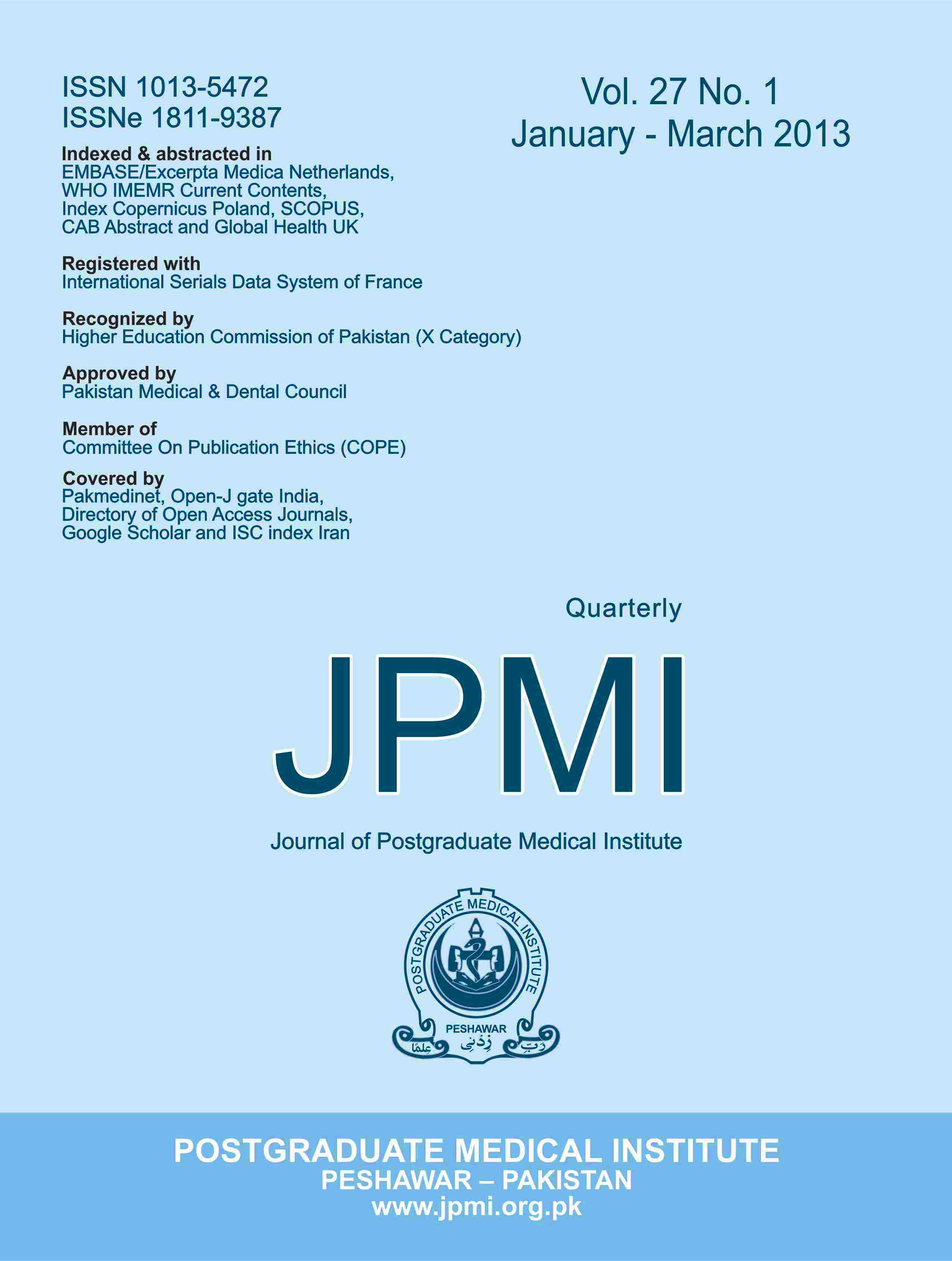THE EFFECT OF QUININE ON QT INTERVAL IN PATIENTS IN A TERTIARY CARE HOSPITAL.
Main Article Content
Abstract
Objectives: To determine the frequency of patients developing QT prolongation with the use of intravenous(IV) quinine therapy in medical unit D of Khyber Teaching Hospital, Peshawar.Methodology: This cross-sectional study was conducted in Medical unit D of Khyber Teaching Hospital,Peshawar, from 1st June, 2011 to 30th November, 2011. The study population comprised of male and femalepatients who tested positive for malarial parasite on peripheral blood smear. Treatment was started withintravenous quinine for a minimum duration of 3 days to a maximum duration of 5 days.Electrocardiography (ECG) was done before starting the patients on IV quinine therapy and QT intervalwas calculated. Repeat ECG was done 72 hours after starting the therapy. Patients were evaluated forprolongation of the QT interval after initiation of treatment with quinine. All the statistical analyses weredone using statistical program SPSS version 17.0. The mean with standard deviation, frequency andpercentages were reported. Significance was tested at p<0.05.Results: Out of a total of 200 patients, only 2 female patients (1%) had a prolongation of the QT intervalfrom their normal baseline interval before treatment. It appears that the cardiotoxic effects of quinine havebeen overstated and that the risk of QT prolongation and fatal arrhythmias is minimal with quininetherapy.Conclusions: It can thus be concluded that quinine is a safe drug for the treatment of malaria withnegligible cardiotoxic adverse effect profile.
Article Details
How to Cite
1.
Humayun M, Haider I, Badshah A. THE EFFECT OF QUININE ON QT INTERVAL IN PATIENTS IN A TERTIARY CARE HOSPITAL. J Postgrad Med Inst [Internet]. 2012 Dec. 17 [cited 2025 Dec. 5];27(1). Available from: https://jpmi.org.pk/index.php/jpmi/article/view/1240
Issue
Section
Original Article
Work published in JPMI is licensed under a
Creative Commons Attribution-NonCommercial 2.0 Generic License.
Authors are permitted and encouraged to post their work online (e.g., in institutional repositories or on their website) prior to and during the submission process, as it can lead to productive exchanges, as well as earlier and greater citation of published work.


